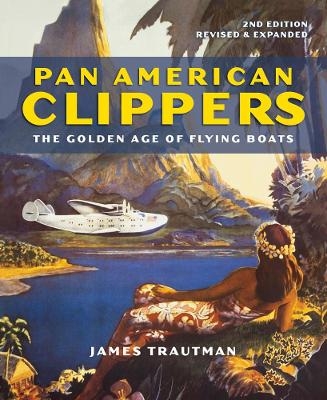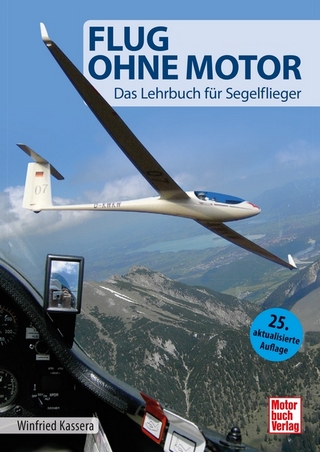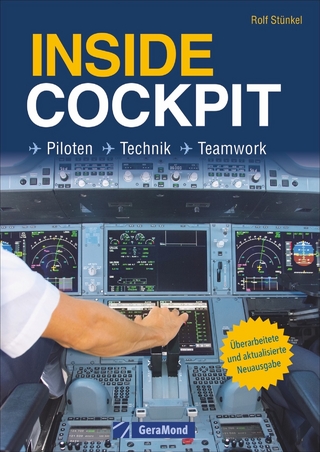
Pan American Clippers
The Golden Age of Flying Boats
Seiten
2019
|
2nd edition
Firefly Books Ltd (Verlag)
978-0-2281-0230-4 (ISBN)
Firefly Books Ltd (Verlag)
978-0-2281-0230-4 (ISBN)
Illustrated history of the golden age of flying boats between the wars, revised with new historical information, colour photographs and artwork.
“The photographs and artwork will enable readers to grasp the magnificence of the transoceanic flying boats...The accurate, authoritative text will provide information that is new to all but the exceptionally well-informed aviation buff and nonspecialist historian.” —Choice.
This edition has an additional 16 pages to add more historical and current information and provide additional detail and context to the historical importance of the flying boats, including: Pan Am’s Art Deco terminals; the fate of the last Pan Am Clippers and where to see the survivors; the Foynes Flying Boat Terminal, Ireland; Trippe and Lindbergh’s groundbreaking flight to the Orient by way of the Great Circle Route (Canada–Alaska–Siberia–Japan–China); Shediac, Newfoundland, landing site of 24 Savoia Manchetti S-55 flying boats from Rome en route to Chicago’s Century of Progress International Exposition; Pan Am enters politics when Frank Roosevelt uses it in Latin America to sidestep the World War II Neutrality Act; Trippe’s long-held dream of flying mail and passengers across the Atlantic Ocean to Europe, and the opening of LaGuardia Airport.
For a world recovering from the Great Depression, the Pan American Airways Clipper symbolized luxury, adventure, and a brighter future. Illustrated with rare period photographs, vintage travel posters, magazine ads and colourful company brochures, Pan American Clippers covers all aspects of the Golden Age of Pan American’s graceful “flying boats.”
Like their maritime namesakes, the Clippers used seaports to form a vast global network of air-travel routes. Visionary PanAm founder Juan Trippe knew the importance of international travel to the 20th century, and his pioneering airline played a central role in the advancement of transoceanic flight, setting overseas time and distance records, providing airmail delivery and eventually as troop and cargo transports for the Allies during World War II. By dramatically reducing travel time and opening up international air travel to the general public, Pan Am Clippers forever changed the world.
This captivating, informative and richly illustrated book takes readers back to a time of glamour, romance and progress, when dreams once thought impossible were suddenly a reality.
“The photographs and artwork will enable readers to grasp the magnificence of the transoceanic flying boats...The accurate, authoritative text will provide information that is new to all but the exceptionally well-informed aviation buff and nonspecialist historian.” —Choice.
This edition has an additional 16 pages to add more historical and current information and provide additional detail and context to the historical importance of the flying boats, including: Pan Am’s Art Deco terminals; the fate of the last Pan Am Clippers and where to see the survivors; the Foynes Flying Boat Terminal, Ireland; Trippe and Lindbergh’s groundbreaking flight to the Orient by way of the Great Circle Route (Canada–Alaska–Siberia–Japan–China); Shediac, Newfoundland, landing site of 24 Savoia Manchetti S-55 flying boats from Rome en route to Chicago’s Century of Progress International Exposition; Pan Am enters politics when Frank Roosevelt uses it in Latin America to sidestep the World War II Neutrality Act; Trippe’s long-held dream of flying mail and passengers across the Atlantic Ocean to Europe, and the opening of LaGuardia Airport.
For a world recovering from the Great Depression, the Pan American Airways Clipper symbolized luxury, adventure, and a brighter future. Illustrated with rare period photographs, vintage travel posters, magazine ads and colourful company brochures, Pan American Clippers covers all aspects of the Golden Age of Pan American’s graceful “flying boats.”
Like their maritime namesakes, the Clippers used seaports to form a vast global network of air-travel routes. Visionary PanAm founder Juan Trippe knew the importance of international travel to the 20th century, and his pioneering airline played a central role in the advancement of transoceanic flight, setting overseas time and distance records, providing airmail delivery and eventually as troop and cargo transports for the Allies during World War II. By dramatically reducing travel time and opening up international air travel to the general public, Pan Am Clippers forever changed the world.
This captivating, informative and richly illustrated book takes readers back to a time of glamour, romance and progress, when dreams once thought impossible were suddenly a reality.
James Trautman is a regular contributor to magazines and newspapers, including Antique Week, and has been featured on TV shows on the history of sports cards, games and other collectibles. He is now working on a project to uncover the wreckage of one of the Pan Am Clippers lost in World War II.
| Erscheinungsdatum | 02.10.2019 |
|---|---|
| Zusatzinfo | 200 clr illus an 100 b&w photos |
| Verlagsort | Ontario |
| Sprache | englisch |
| Maße | 227 x 279 mm |
| Themenwelt | Natur / Technik ► Fahrzeuge / Flugzeuge / Schiffe ► Luftfahrt / Raumfahrt |
| ISBN-10 | 0-2281-0230-8 / 0228102308 |
| ISBN-13 | 978-0-2281-0230-4 / 9780228102304 |
| Zustand | Neuware |
| Haben Sie eine Frage zum Produkt? |
Mehr entdecken
aus dem Bereich
aus dem Bereich
das Grundwissen zur Privatpilotenlizenz
Buch | Hardcover (2024)
Motorbuch Verlag
39,90 €


